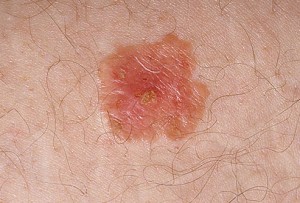By Alex James Cummins –
Whether it’s a family beach vacation, hours spent at practice and sporting events, or just sitting by the pool, doctors insist keeping your skin safe under the sizzling summer sun should be a top priority.
According to skincancer.org, a new study has revealed an alarming rise in melanoma, a tumor of skin cells, among people aged 18 to 39. Over the past 40 years, rates of this potentially deadly skin cancer has grown by 800 percent among young women and 400 percent among young men.
Skin cancer is an abnormal growth of skin cells and most often appears on skin that is continuously exposed to the sun. Skin cancer can also show up on your skin when unprotected parts of the body that aren’t used to sun light are exposed for extended period of time.
A person should never have to deal with skin cancer let alone in there teen years.
“I’m not worried about getting melanoma or anything like that,” said Penn Manor senior, Chris Flemming.
“I love being tan in the summer, and I don’t think about getting skin cancer too much when I’m laying out all the time,” stated another Penn Manor senior Ashley Richards.
“Increased use of tanning beds and sun exposure is likely one of the major causes in the increased melanoma incidences in teenagers,” says Jennifer Aldrink, MD, a pediatric surgeon at Nationwide Children’s Hospital, in an interview with wusa9.com.
Indoor tanning, outdoor tanning, terrible sun burns from a lack of using sun screen, geographic location, moles, skin type, and even a weak immune system all cause or are leading to this rise among teens.
All of these factors, however, don’t seem to come into teens’ minds when going through their day.
“I never use sun screen when I’m outside fishing all day,” said senior Robert Warfel.
There are a lot things that teenagers can do in order to keep themselves safe and probably lower the statistics that are showing the rise in skin cancer.
According to skincancer.org some ways to protect yourself and your family include —
– Seek shade, especially during midday hours.
– Cover up with clothing to protect exposed skin.
– Wear a hat with a wide brim to shade the face, head, ears, and neck.
– Wear sunglasses that wrap around and block as close to 100% of both UVA and UVB rays as possible.
– Do not burn.
Avoid tanning and UV tanning booths.
– Use a broad spectrum (UVA/UVB) sunscreen with an SPF of 15 or higher every day. For extended outdoor activity, use a water-resistant, broad spectrum (UVA/UVB)
sunscreen with an SPF of 30 or higher.
– Apply 1 ounce (2 tablespoons) of sunscreen to your entire body 30 minutes before going outside. Reapply every two hours or immediately after swimming or excessive sweating.
– Keep newborns out of the sun. Sunscreens should be used on babies over the age of six months.
– Examine your skin head-to-toe every month.
– See your physician every year for a professional skin exam.